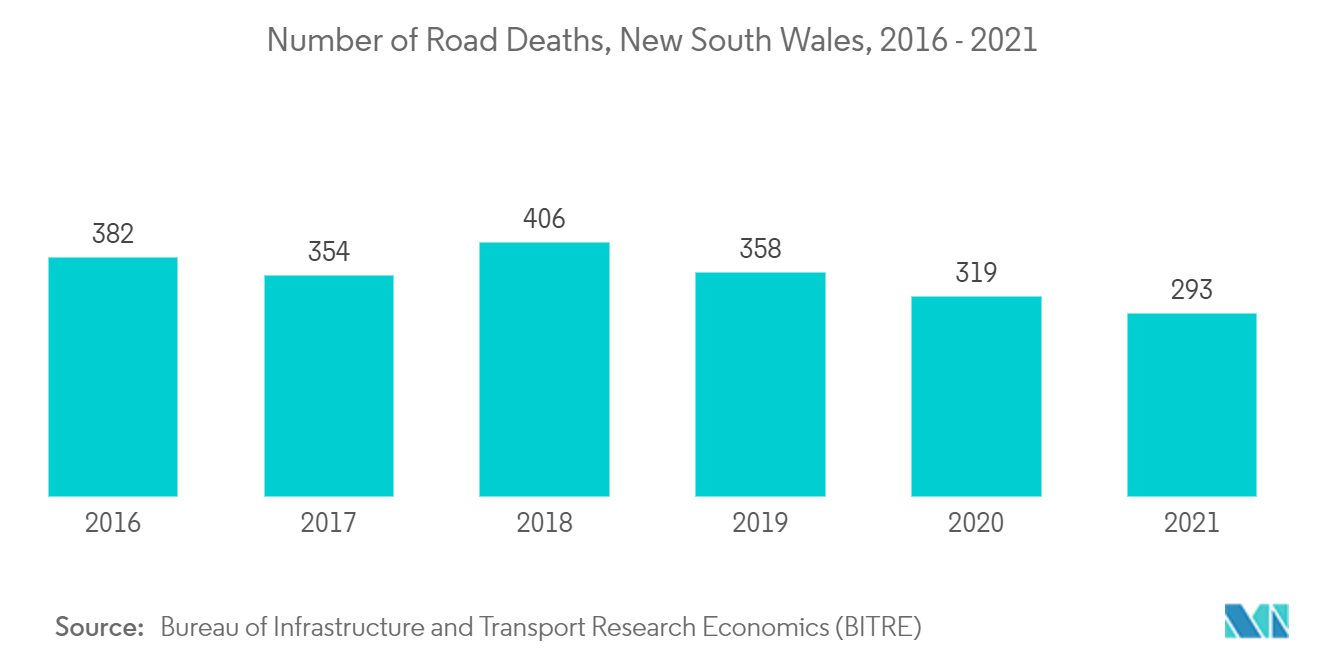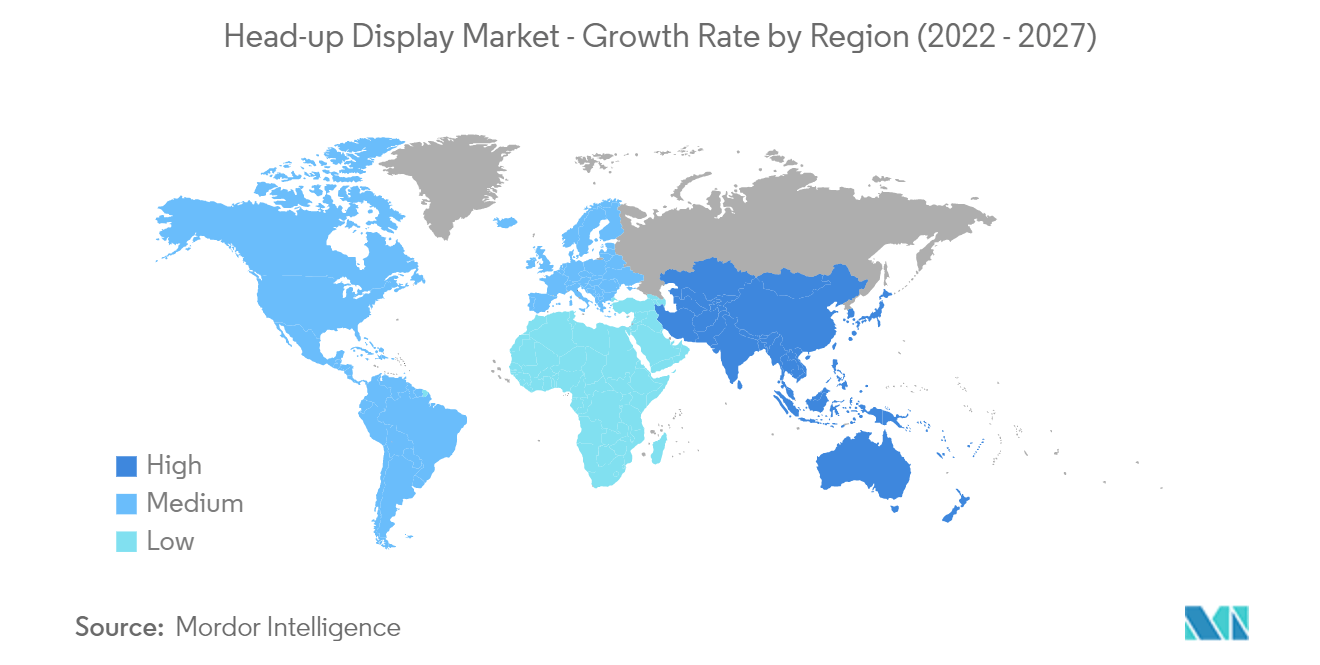Market Trends of Head-up Display Industry
This section covers the major market trends shaping the Head-up Display Market according to our research experts:
Growing Adoption of HUD in Automotive Industry Driving the Market's Growth
- Digitalization is a major trend in the automotive industry. The industry has witnessed numerous technological advancements in the digital field over the last couple of decades. The technological enhancement in the form of HUD is one such example.
- A vehicle's HUD keeps drivers focused on the road, safely delivering speed, warning signals, and other vital vehicle and navigation information on the windshield directly in the driver's line of sight.
- The growing need for safety and user comfort is one of the most important factors driving the adoption of HUD in the automotive industry. Moreover, an increasing number of road accidents fuels the need for HUD. For instance, According to the World Health Organization, over 1.35 million people die each year as a result of road traffic crashes globally. Injuries from road traffic accidents are the leading cause of death among people aged between 5 and 29 years. Moreover, according to the Bureau of Infrastructure and Transport Research Economics (BITRE), there were 293 road deaths in New South Wales in 2021.
- Luxury brands such as Audi, BMW, Lexus, Land Rover, and Mercedes-Benz, among others, are offering a HUD system as a standard or optional add-on feature across their premium vehicles.
- However, OEMs have been thinking and making them standard even in economy cars. In May 2022, Ariya, launched by Nissan, is the sixth car model from Nissan to use the WS HUD of Panasonic, following the Skyline, Rogue, Qashqai, Pathfinder, and QX60. The WS HUD is a system that presents a variety of information such as vehicle speed, navigation instructions, and ProPILOT 2.0 driver assist information in the driver's line of sight by projecting it on the windshield.
- Additionally, the implementation of AR has made HUD an important part of Advanced Driver Assistance Systems (ADAS). The OEMs are expected to include more ADAS applications in their vehicles in the next decade.
- BMW also includes entertainment functions in the HUD. It displays radio stations or song lists as one scrolls through them using a button on the steering wheel. Hence the launch of new car models equipped with HUD is anticipated to boost the market's growth.

North America is Expected to Hold a Significant Share
- North America is expected to cater to a significant market share with its major production sites of various automotive brands and innovation trends in military and defense.
- The government regulations in the developed regions of North America are increasingly favoring automotive innovations and technologies that support vehicle and road safety. In October 2018, the US Department of Transportation (USDOT) announced their latest federal guidance for automated vehicles entitled, "Preparing for the future of transportation: Automated Vehicles 3.0." (AV 3.0). AV 3.0 reinforced the USDOT commitment to supporting the safe integration of automation into the broad transportation system.
- Further, the military budget is the largest portion of the United States federal budget allocated to the Department of Defense, or more specifically, the portion of the budget that goes to any military-related expenditures. According to the 61st NDAA bicameral agreement, the United States will spend 777.7 billion dollars on the national defense budget for the fiscal year 2022.
- The United States (US) is one of the world's biggest markets for aerospace, defense, and space. Collins Aerospace is providing the Federal Aviation Administration with a virtual reality system that will be used to investigate how pilots perform when flying with a head-up display. The VR device enables FAA researchers to conduct research in the domain of advanced vision systems on HUDs with flexibility, efficiency, and effectiveness. Such an initiative caters to the market growth adoption in the aviation sector.
- Moreover, in May 2022, BAE Systems unveiled a lightweight LiteWave head-up display for commercial and military pilots, which is 70% smaller and 80% faster to install. This HUD is designed to be mounted above a pilot's head to present critical information directly in their lines of sight, such as direction, altitude, and speed. Powered by BAE's patented waveguide technology, LiteWave can be adjusted to any individual flying position, allowing the pilot to maintain optimal situational awareness, even during poor weather or at night.


